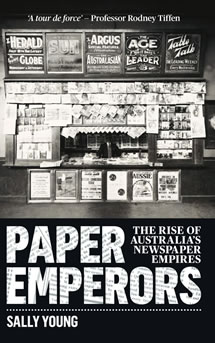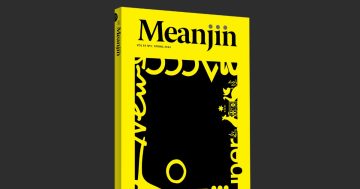Reviewed by Rama Gaind.
By Sally Young, UNSW Press, $39.99.
 “Newspapers will expose many things, but seldom each other.” There is a saying in the newsrooms that “the best stories are never printed in the paper”.
“Newspapers will expose many things, but seldom each other.” There is a saying in the newsrooms that “the best stories are never printed in the paper”.
Newspapers find it difficult to tell the truth about themselves, but this landmark tome tells those stories.
This authoritative book reveals who owned Australia’s newspapers and how they used them to wield political power. A corporate and political history of Australian newspapers spanning 140 years, it explains how Australia’s media system came to be dominated by a handful of empires and powerful family dynasties. Many are household names, even now: Packer, Murdoch, Fairfax, Syme.
Written with perception and dynamism, Young shows incomparable command of a vast range of sources. The Professor of Political Science at the University of Melbourne shows how newspaper owners influenced policy-making, lobbied and bullied politicians and shaped internal party politics.
The book begins in 1803 with Australia’s first newspaper owner – a convict who became a wealthy bank owner – giving the industry a blend of notoriety, power and wealth from the start.
Throughout the 20th century, Australians were unaware that they were reading newspapers owned by secret bankrupts and failed land boomers, powerful mining magnates, underbelly-style gangsters, bankers and corporate titans. It ends with the downfall of Menzies in 1941 and his conviction that a handful of press barons brought him down.
The intervening years are packed with political drama, business machinations and a struggle for readers, all while the newspaper barons are peddling power and influence.
The magnitude of information contained in Paper Emperors is impressive and overwhelming. The extraordinary amount of detail and subsequent clarification is credible.
It’s compelling reading, with a time span ranging from 1803-1943. Meticulous research can be seen with the information that’s poured into the appendix with biographies of key newspapers, list of figures, notes, bibliography and the index.
This one is a must-read, particularly for aspiring journalists.









